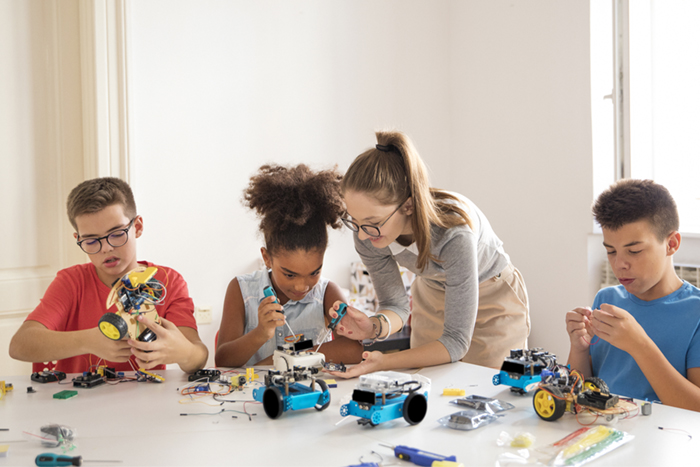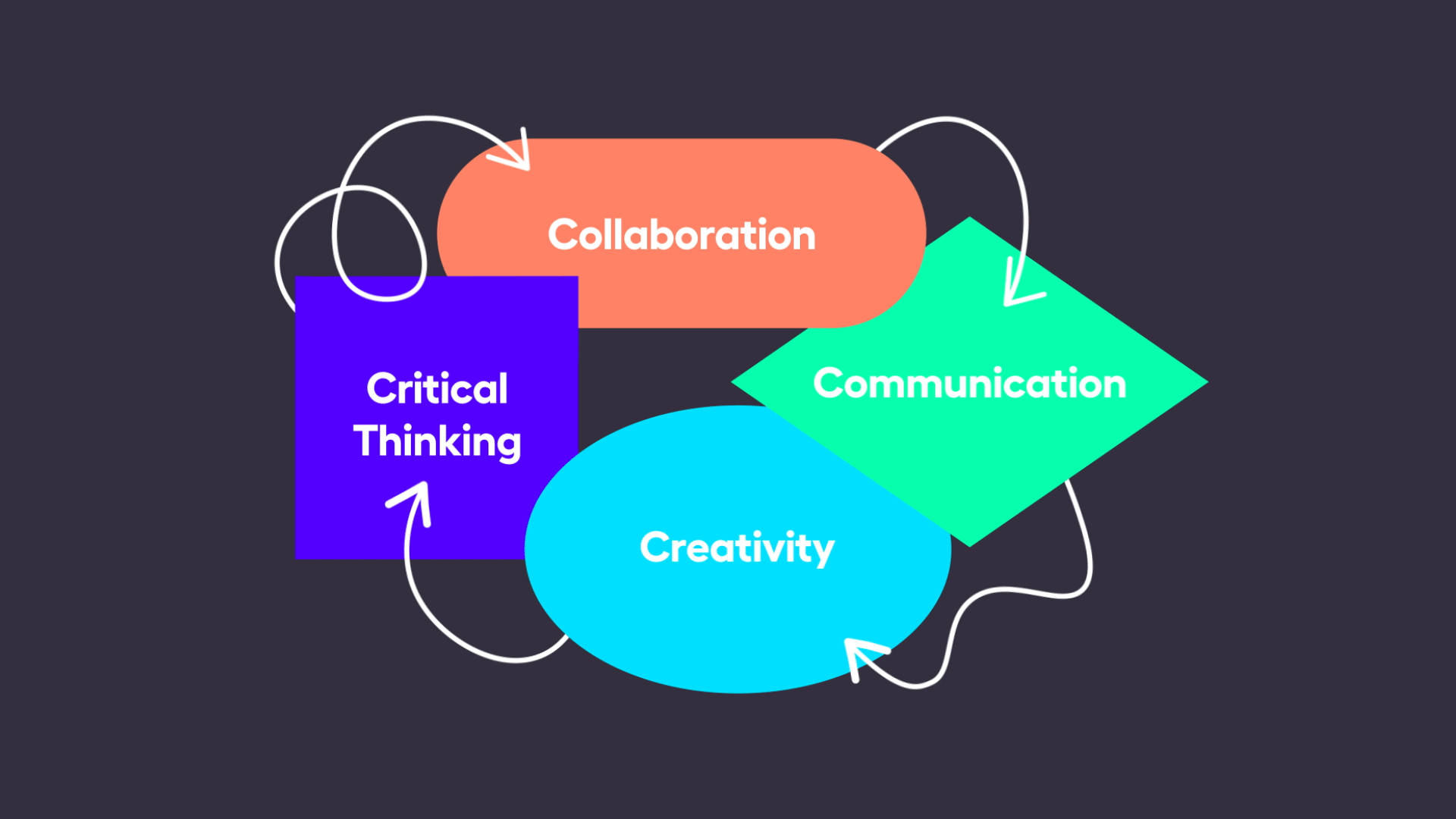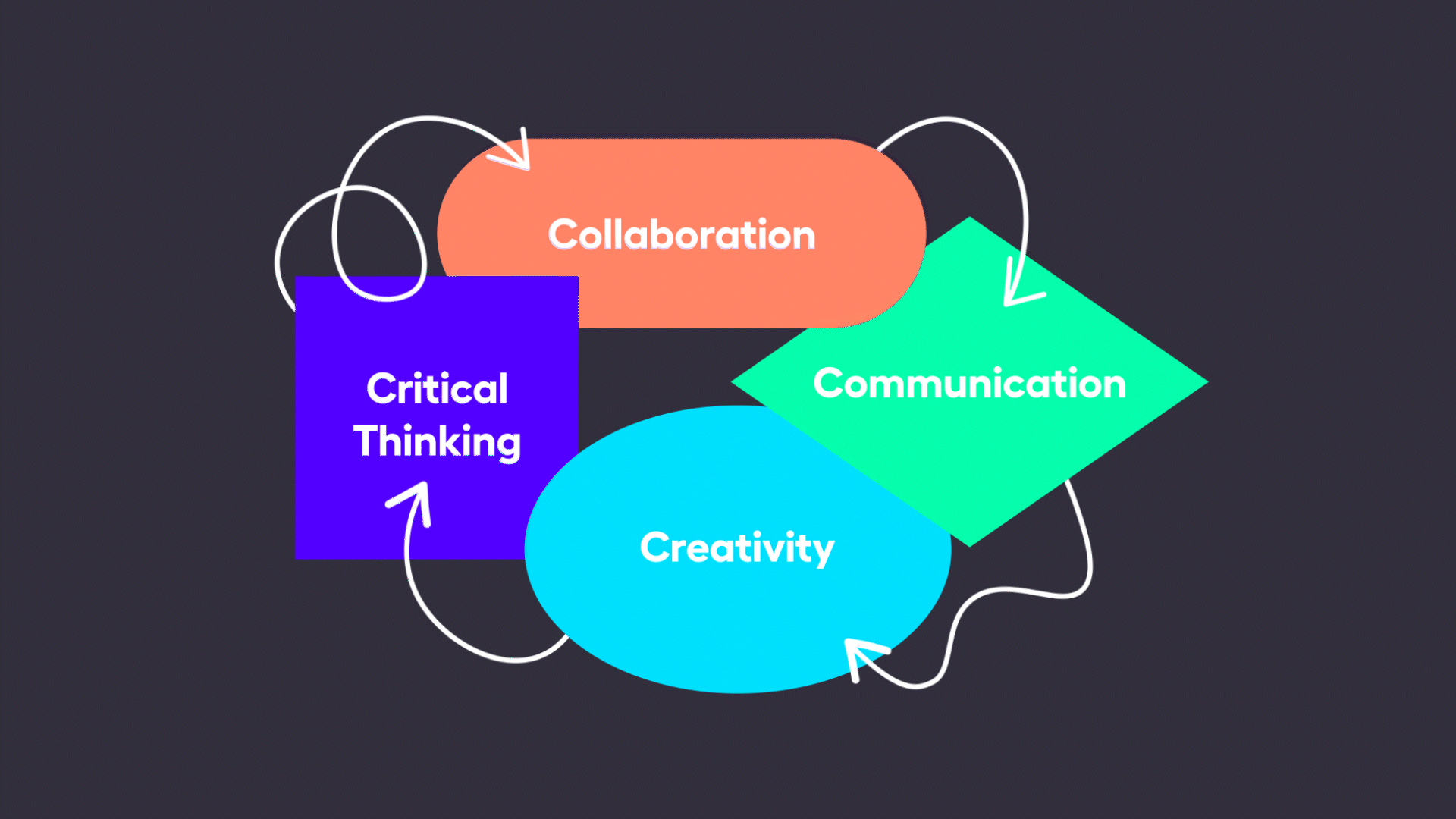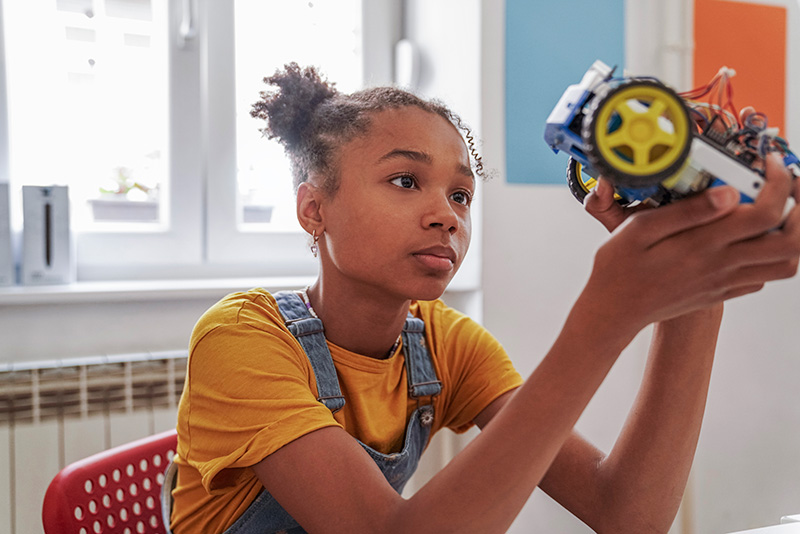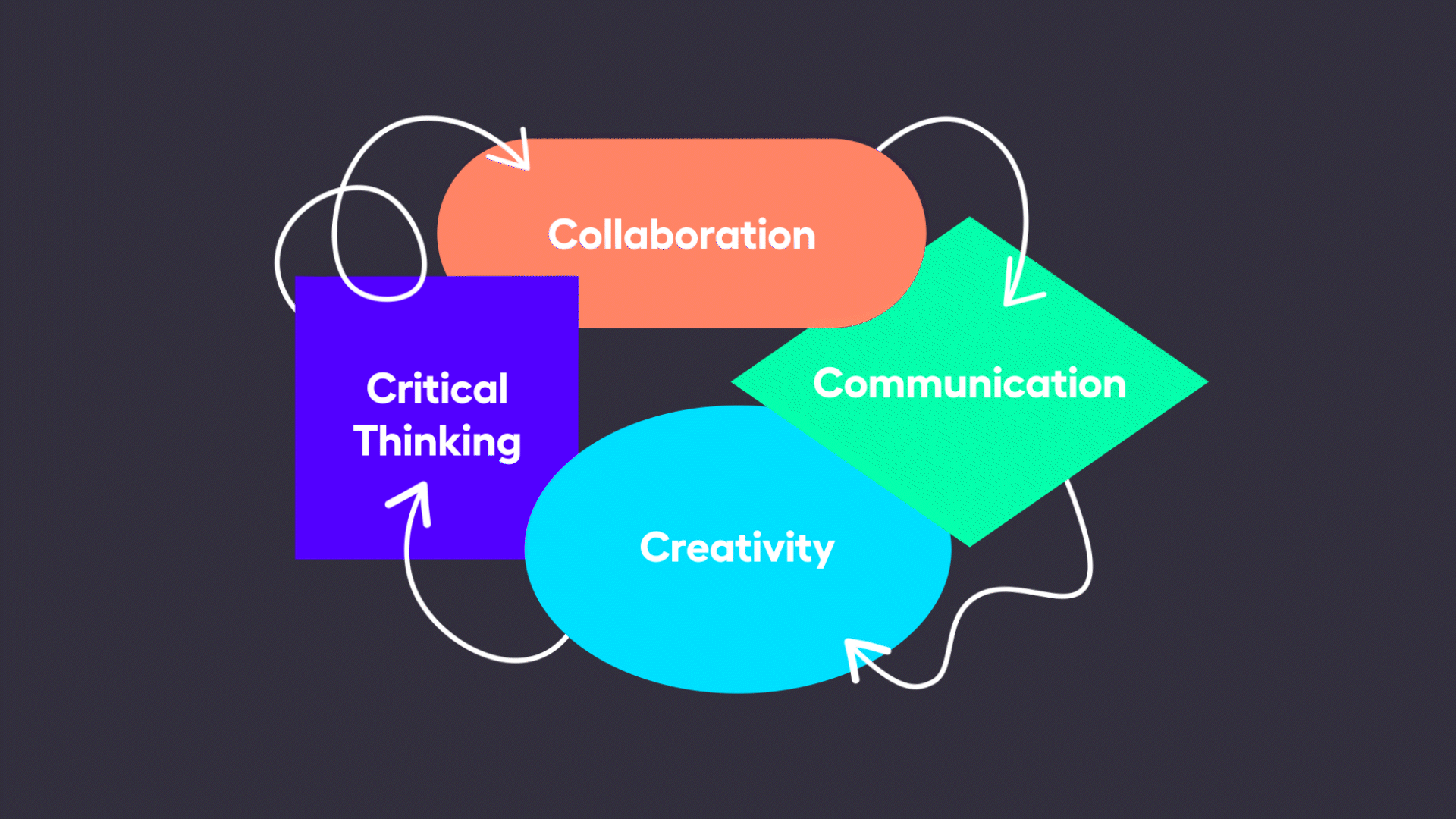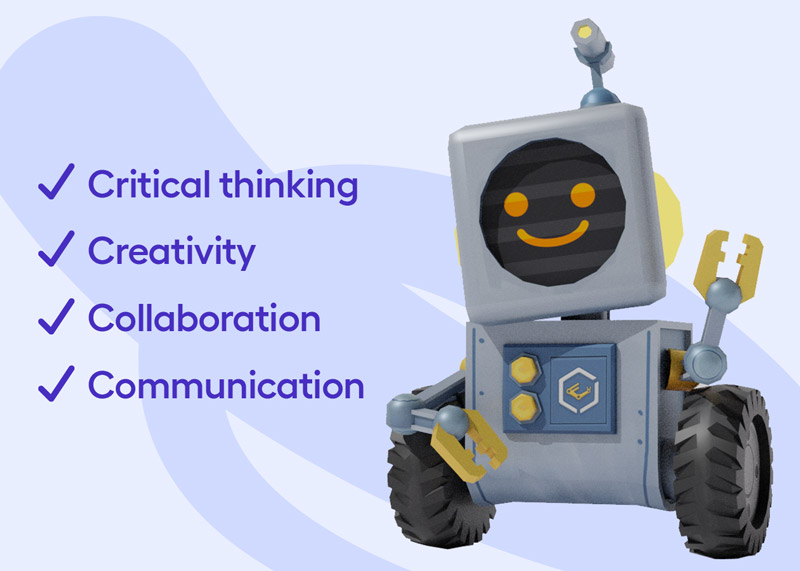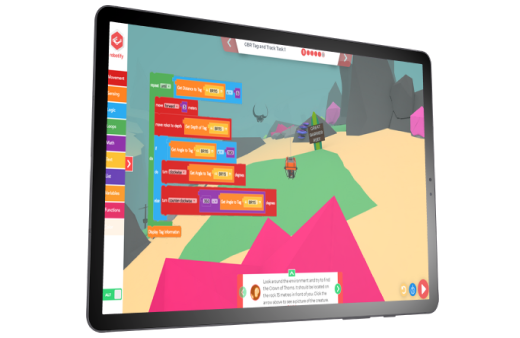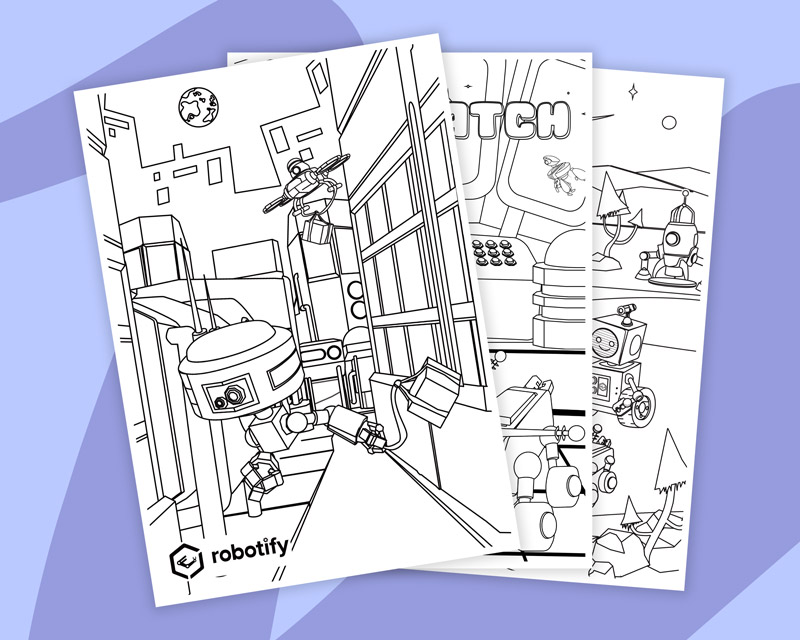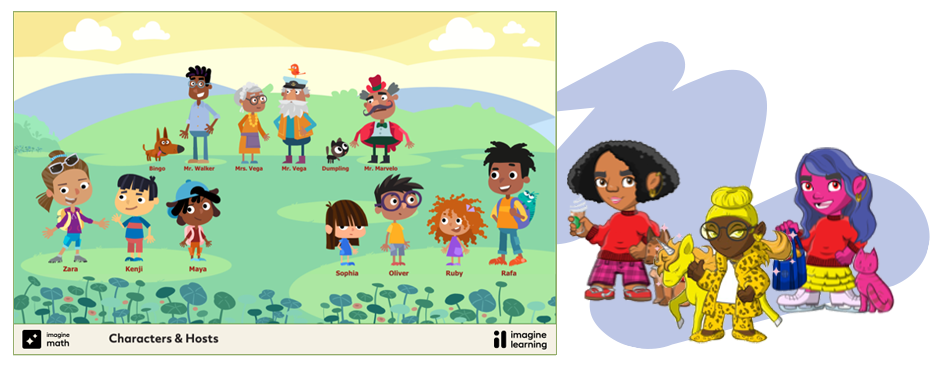May 28, 2024 4:58 am
Open Any Door with Creativity
In our final blog post on the 4Cs, we unpack how STEM learning fosters creativity. Discover how innovative thinking drives scientific breakthroughs and engineering solutions, proving that creativity isn’t just for the arts — it’s essential for progress in every field.
Ever thought that studying STEM (science, technology, engineering, and mathematics) is only useful for students considering careers in science or tech? If so, then you wouldn’t be alone — but it’s time to change that perspective.
The truth is, workplaces are changing fast, and some traditional skills are becoming less relevant today. Growing digitalization of roles, AI technologies, and new communication methods demand a totally different set of skills fit for the modern workplace (Thornhill Miller et al., 2023).
This is where STEM subjects come into play. By studying STEM at schools, students pick up the soft skills that are exactly what employers look for today. Not only do these soft skills make the transition from education to the workplace smoother, they also open the door to any career — whether that’s a STEM-related role or not. These soft skills are commonly referred to as 21st-century skills, or the 4Cs: critical thinking, collaboration, communication, and creativity.
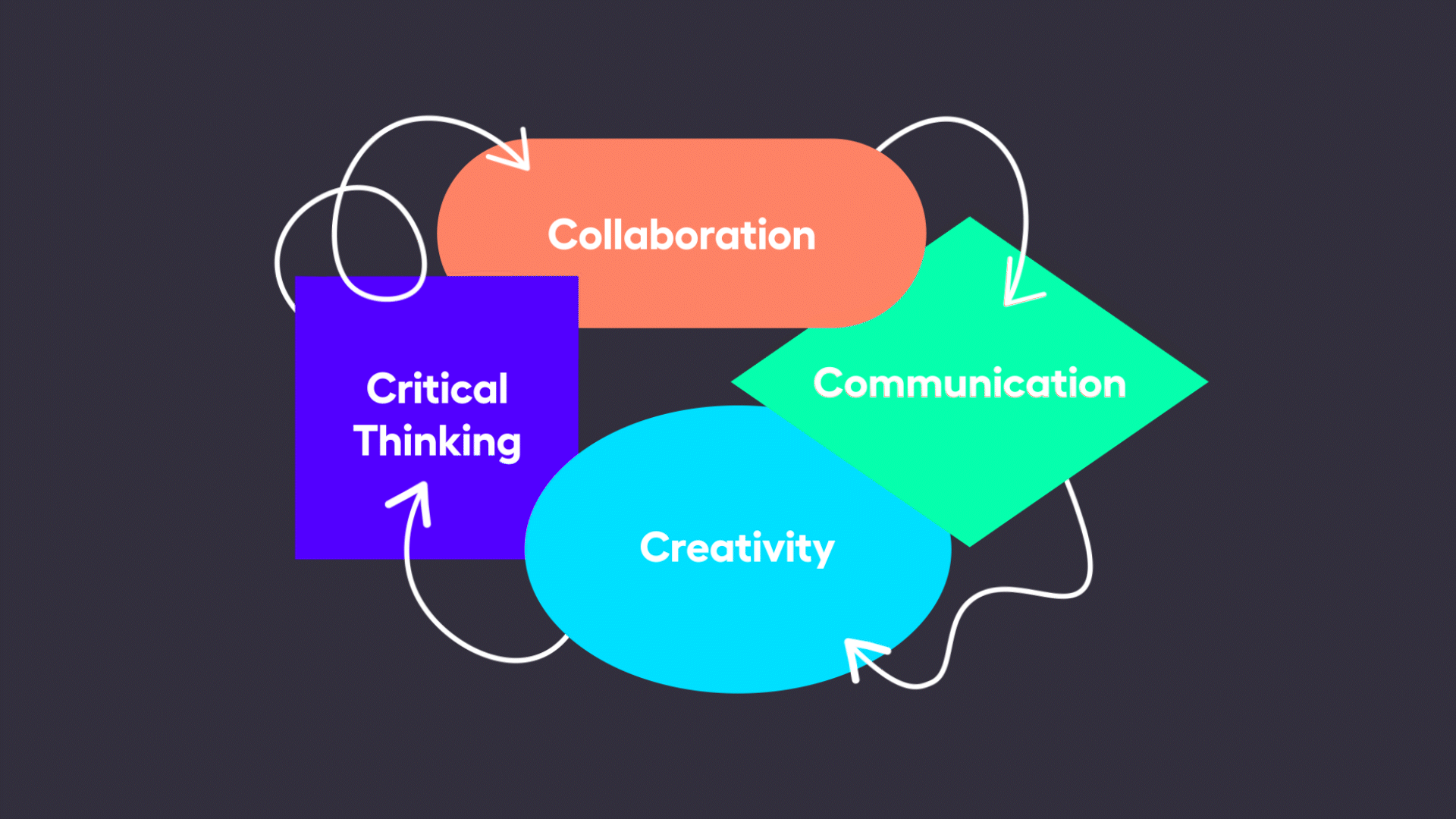
Creativity: The Last C Unveiled
Creativity in STEM
When you imagine a “creative” person, who do you see? An artist, actor, or a musician, maybe? Likely a scientist or a mathematician wouldn’t be the first to spring to mind — but they should. It’s a common myth that the arts are creative disciplines and STEM subjects are not. But this must be challenged because such a mindset creates a false picture of what it means to work in STEM — and the skills students stand to gain when engaging with STEM subjects. The fact is, STEM is inherently creative. Think about it — every scientific discovery, every engineering solution, was born from innovative thinking and creativity. The Wright brothers didn’t happen upon the first airplane — their breakthrough was a product of some serious out-of-the-box thinking and creative problem-solving.
Why Creativity is a Key Skill
Creativity has long been included as a core competency on job adverts across every field. It’s clear why — what job doesn’t require some level of creative thinking? And looking forward to the future, it’s unlikely that this is going to change.
By 2030, it’s estimated that up to 800 million jobs will be displaced by automation and artificial intelligence (AI). In such a rapidly changing job market, creativity will be crucial for adapting to new roles and driving progress in fields that machines cannot easily replicate.
“Sometimes those things don’t always work out, but it’s still enjoyable to go through it because at the end you’re going to come out with something that you never thought you would.”
Fostering the Next Generation of Creative Thinkers
Here are just some ways STEM can help foster the next generation of creative thinkers:
Imagine Learning STEM
Prepare the next generation of STEM leaders with digital and hands-on learning aligned to the 4Cs.
